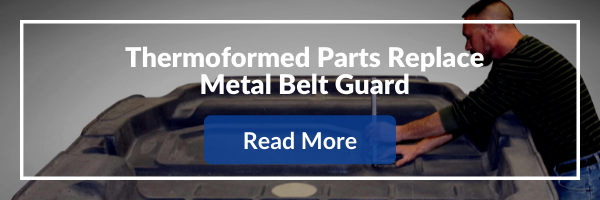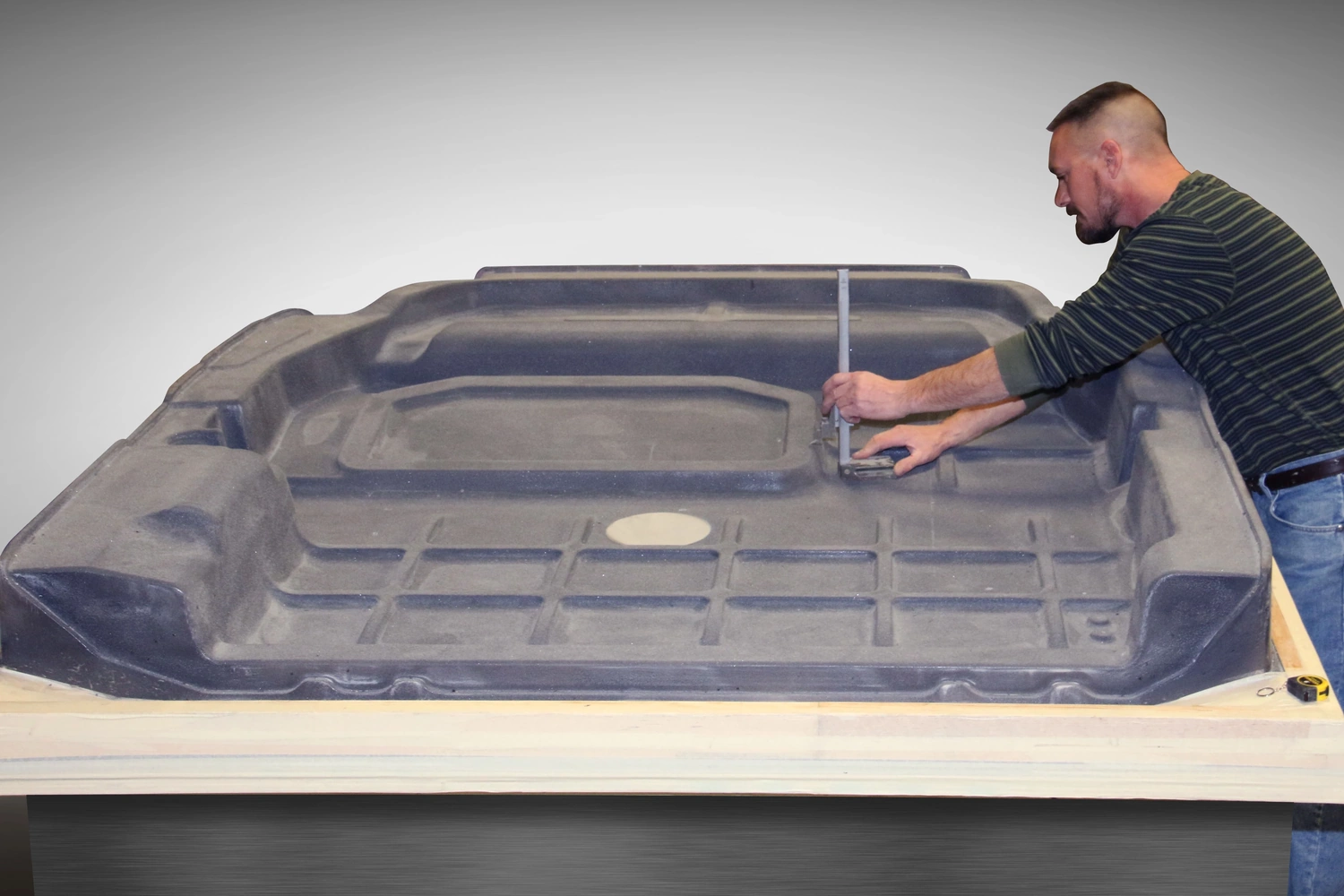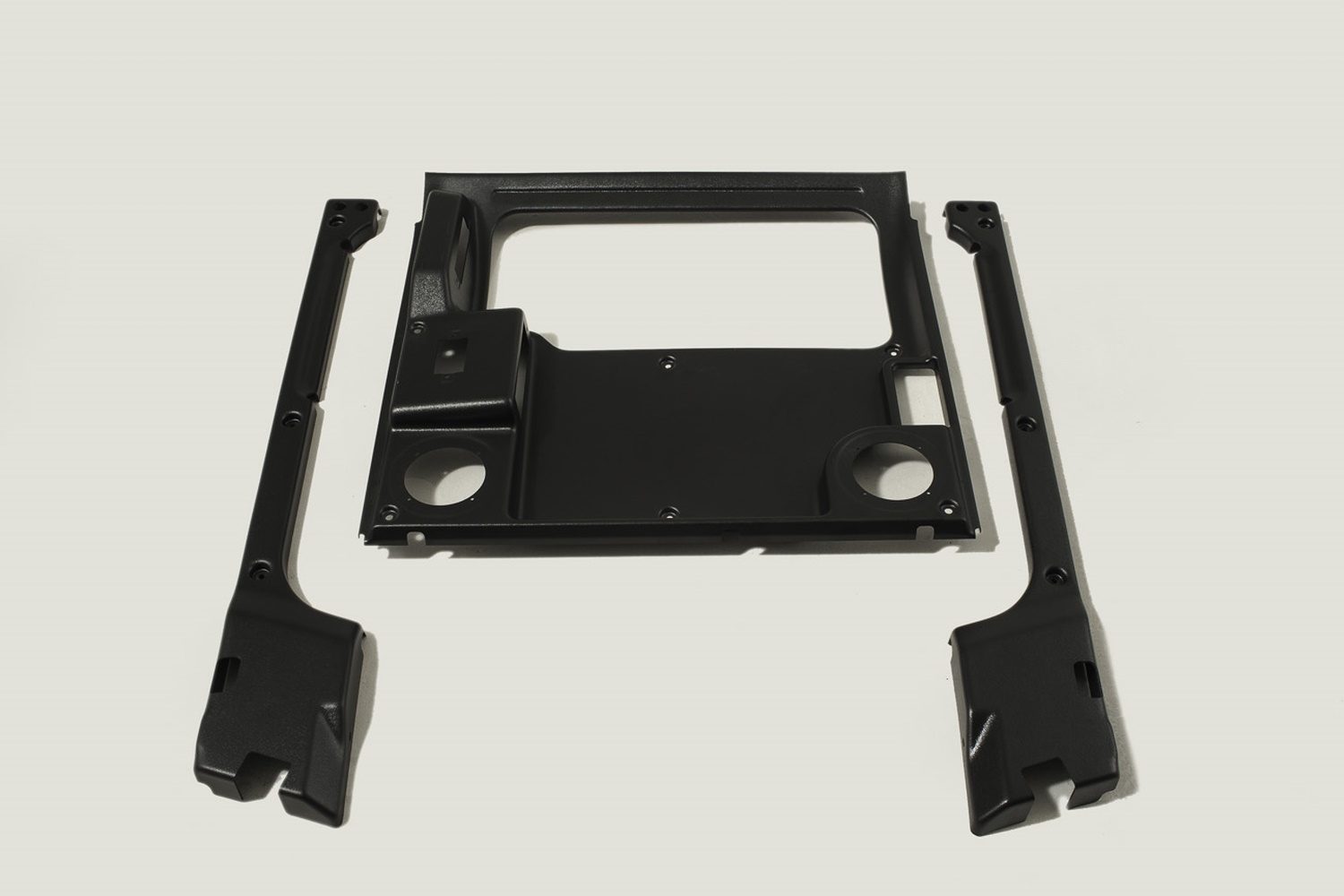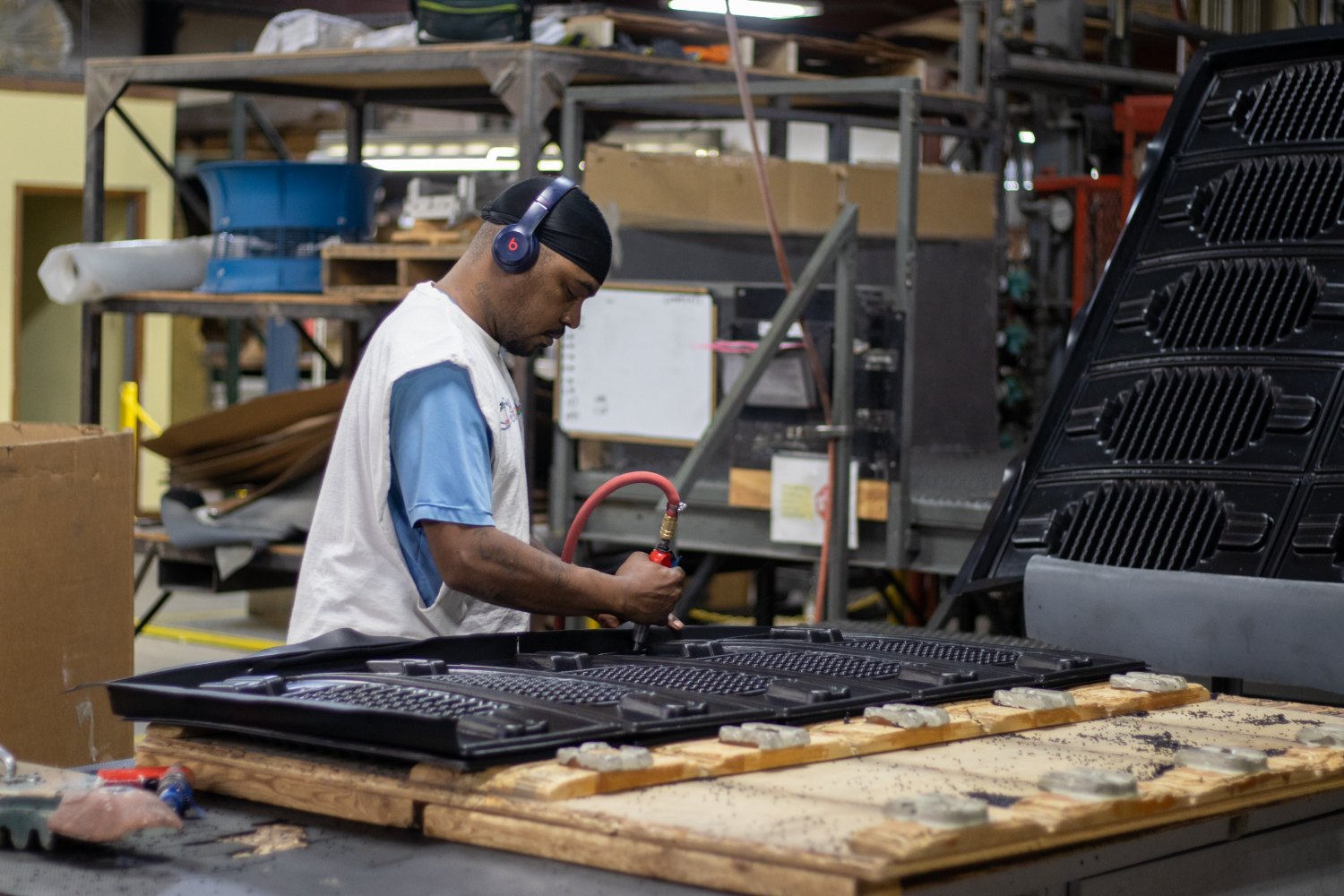What is the difference between thermoforming and injection molding?
We get a lot of questions about the differences between thermoforming and injection molding, so here is our outline of the key differences.
In thermoforming, a flat sheet of plastic is heated to a pliable temperature and then molded to the tool's shape using a vacuum or both suction and pressure. Once a sheet reaches a pliable temperature, it is formed over a male or female mold.
Since thermoforming uses a less complex single-sided mold made from highly formable materials, thermoform designs can be modified quickly and with minimal cost.
With injection molding, plastic pellets are heated to a liquid state and injected into a two-piece matched mold.
Let’s look at some key areas and compare the molding methods.
Part Design
Thermoformed parts tend to have simpler designs and geometries with larger tolerances making it a preferred production method for larger parts.
Injection-molded parts are more intricate and may have very tight tolerances making this an ideal process for small parts.
Tooling
The type of thermoforming tooling employed will depend on the volume of the prototype or production run and the material requirements of the manufactured part. Thermoforming prototype tools are generally made of wood or machineable composite or 3d printing media, while production tools are composite, ceramic, machined, or cast aluminum.
Tooling can be made in a few days if it is wood or even 3D printed. The average time to produce thermoforming tooling is 1-8 weeks, depending on the tool material and quantity of parts required. Additional weeks after the first article completion may be required if the part needs more complex trims requiring CNC, robotic trimming, or secondary assembly fixturing.
Injection molding requires dual molds (male/female) made with heavier materials that are more time-consuming and expensive to build than thermoforming tools. The heavier materials are needed due to higher pressures during the molding process and the need for more cycles for higher volume production runs.
The molds often include complex moveable sections or articulation to allow for undercuts, negative draft and snap features. Additionally, locations for plastic injection gates and ejector pins are required. Material flow analysis is necessary to ensure proper plastic injection point locations to prevent incomplete fill, part flow lines, and weak points within the part.
Injection molding tooling typically takes between 12 and 16 weeks to produce.
Tooling costs are significantly higher for injection molding than for thermoforming, with tooling costs anywhere from double to 10x the cost.
Time to Production
Following tooling development, thermoforming production usually occurs within 1-2 weeks after the tool is approved. Thermoforming delivers a short product development and prototyping timeline compared to injection molding.
With injection molding, tooling takes 12-16 weeks, and it can be up to 4-5 weeks after tooling completion when production starts.
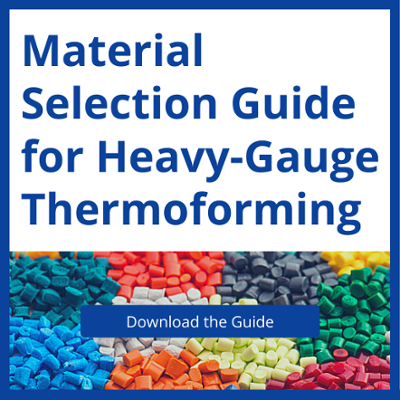 Materials
Materials
There are many options for different texture finishes, unlimited colors, and thicknesses of thermoformed products. Thermoformed materials may be more limited depending on the specifications of the finished product in terms of resin options. Larger parts often have stiffness and durability requirements that guide the choices of materials.
Injection-molded products use thermoplastic pellets available in a wide variety of materials and colors. Texture, gloss level, and thickness are defined by the tooling instead of the material choice.
Finishing/Post-molding
The final pieces of the thermoformed product are trimmed and shipped uncoated, painted, silk-screened, or have specialty coatings applied. Thermoforming is ideal if the finished product requires a texture, printed film, or material color.
The final pieces of the injection molded product are removed from the mold, where they are commonly painted for aesthetic reasons. They can also be silk-screened or have specialty coatings. Often though, injection-molded parts are finished once they come out of the mold.
Production Volume
Thermoforming is used for smaller production quantities as well as larger-sized parts runs.
Plastic injection molding is typically used for smaller, more intricately designed parts with high-volume production runs. Larger injection molded parts are generally limited to specific industries such as automotive and consumer electronics.
Part Costs
The aggregate part cost, including tooling costs, is lower for thermoforming if the production volumes are below 3,000-5,000 parts. The lower tooling cost offsets the higher individual thermoformed part cost.
Beyond these volumes, injection molding becomes more competitive because the tooling lasts longer, tooling costs are amortized over a larger production quantity, and the individual part price is lower.
The end result required determines the best method of forming. The answer to the question of which method to use is always - it depends. It depends on timing, production volumes, and part requirements.
Please reach out anytime and ask us this question, and we will be happy to give your expert advice on which method is best for your application.
